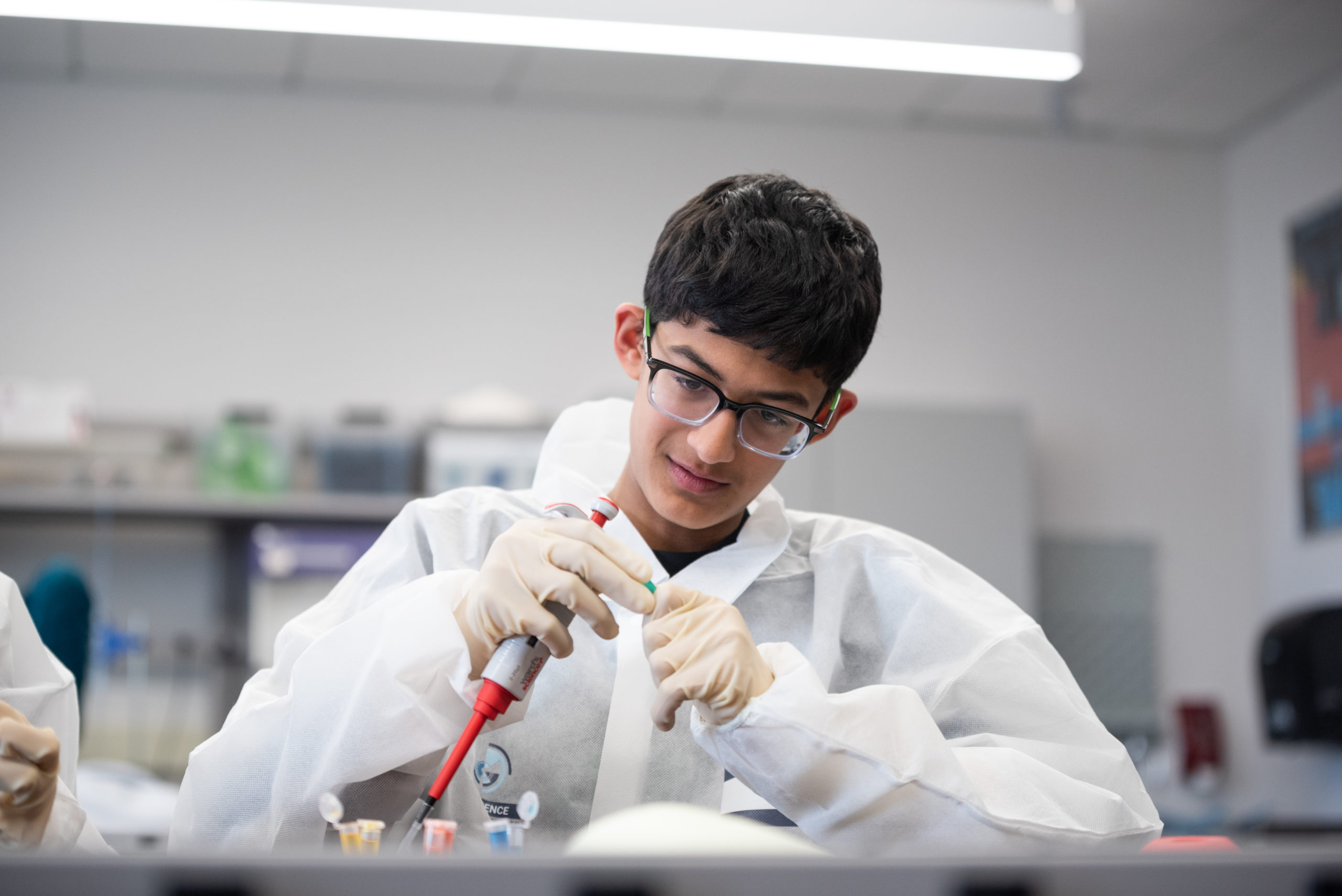
East of Main Street, situated near both the Longmont Recreation Center and the Longmont Museum, looms a building of glass and steel. When the sun hits, it could be an architectural drawing brought to reality, with clean lines that evoke a blueprint.
That building is the Innovation Center, St. Vrain Valley School District’s hub for advanced science and technology education. Transcending traditional classroom education, the Innovation Center offers hands-on experience for students in more than a dozen different programs, including aeronautics, bioscience, cybersecurity and robotics.
St. Vrain Valley School District, or SVVSD, stretches across municipality and county borders, a vast district that serves students from Lyons to Erie and Mead. SVVSD’s Executive Director of Innovation, Axel Reitzig, refers to it as a hub-and-spoke system with programs at middle and high schools that directly connect with some of the larger projects at the Innovation Center.
“There’s really a lot of collaboration in the schools. For example, our aero program works together with the aero program at Erie High School,” Reitzig explains. “We’re fortunate to have equipment here to build a plane that would be hard for any high school to offer, but they offer classes there that we don’t have here. There’s a synergy between the schools.”
That synergy doesn’t start at middle school, Reitzig says. Summer programs and field trips bring the elementary schools into the Innovation Center, while competitive robotics teams bring SVVSD students of all ages to the national spotlight.
Tying it all together is the Innovation Center’s mobile lab, a bus packed with demonstrations aimed at enticing students and encouraging new ways of thinking at a young age. The mobile lab doesn’t just visit schools, but can be found at fundraisers and festivals throughout the area.

Beyond just taking classes, the Innovation Center actually employs around 180 students throughout the district on a variety of project teams ranging from media production to conservation work.
“The way kids have talked about it, it’s a special place for them,” Reitzig says. “It’s real world, authentic work that they’re doing. They have expectations, they’re getting paid, it’s a real job, but they also have space to explore, try things out and make mistakes without feeling like they’re getting punished for it.”
Those project teams often work with local tech companies to give them real world experience, but some of the conservation efforts have involved collaborations with county and city governments as well.
Working closely with aquatic nonprofit Ocean’s First Institute, Colorado Parks and Wildlife and Boulder County Parks and Open Space, Innovation Center students have spent a couple years preparing to reintroduce the northern redbelly dace species of fish into Colorado waterways in and around Longmont. The project combined artificial intelligence and aquatic video capture to determine if the fish reintroduction was successful.
A new project in conjunction with the city of Longmont government has students working with artificial intelligence and trail cameras, monitoring wildlife activity at the Jim Hamm Nature Area in northern Longmont. Mentored by SVVSD Assistant Superintendent of Innovation Joe McBreen, the students were tasked with developing a system that would record species movements as well as analyze it—what McBreen calls “critter cams.”
“(The city) reached out to us last year and were curious to see if our students could come up with an automated, AI-based mechanism to determine a baseline of animal activity at Jim Hamm,” McBreen says. “Once they have that baseline established, they can do a before-and-after analysis.”
Projects like the “critter cams” or redbelly dace reintroduction are prime examples of the intersection between science and community at the Innovation Center because of what they offer students—working with real world mentors, cutting edge technology and working toward a worthy cause.
Reitzig refers to it as putting the horse in front of the cart, moving past the traditional separation of subjects in pre-college education.
“Knowledge gets dissected and kids don’t always see how it’s related,” Reitzig says. “Having a specific problem to solve or a client to work with brings everything together.”
That sense of ownership and authority in a project helps keep the students invested and inspired, Reitzig says. Some students, like Jake Roberts, even come back to work at the Innovation Center during college, to mentor the next generation.
Roberts, who is working on his masters degree now, was in the first cohort to go through the Innovation Center’s Apple Technician program. After that, Roberts started getting involved with the competitive robotics teams in the district. Now he helps coach and organize robotics tournaments for students now, which also helps support his studies in e-sports business.
“It sucks you in and you get excited about it. You can’t really leave it behind,” Roberts says. “Getting the opportunity to sit in a room and not break $10,000 robots, it was another opportunity to throw yourself into it without worrying about messing up.”
Getting to take that experience as a student, hands-on learning with tangible rewards in both knowledge and a paycheck, is one of Roberts’ favorite parts of the Innovation Center.
“Being able to come back and be a part of that process for other students, to help them work through that and help them learn on the job, building skills that are transferable to other parts of life; it’s been really cool to be a part of that process from top to bottom,” Roberts says.



